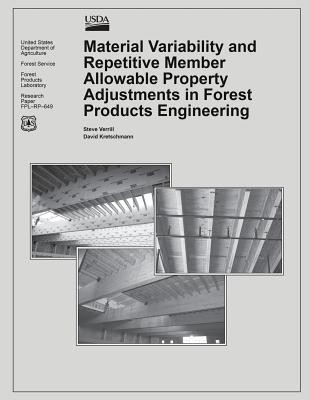
- We will send in 10–14 business days.
- Author: United States Department of Agriculture
- Publisher: CreateSpace Independent Publishing Platform
- Year: 2015
- Pages: 40
- ISBN-10: 1508446318
- ISBN-13: 9781508446316
- Format: 21.6 x 28 x 0.2 cm, softcover
- Language: English
- SAVE -10% with code: EXTRA
Material Variability and Repetative Member Allowable Property Adjustments in Forest Products Engineering (e-book) (used book) | bookbook.eu
Reviews
Description
It has been argued that repetitive member allowable property adjustments should be larger for high-variability material than for low-variability material. We report analytic calculations and simulations that suggest that the order of such adjustments should be reversed. That is, given the manner in which allowable properties are currently calculated, as the coefficient of variation of the strength distribution of individual elements increases, the upward repetitive member adjustments (if any) of assemblies constructed from these elements should decrease.
EXTRA 10 % discount with code: EXTRA
The promotion ends in 18d.01:14:37
The discount code is valid when purchasing from 10 €. Discounts do not stack.
- Author: United States Department of Agriculture
- Publisher: CreateSpace Independent Publishing Platform
- Year: 2015
- Pages: 40
- ISBN-10: 1508446318
- ISBN-13: 9781508446316
- Format: 21.6 x 28 x 0.2 cm, softcover
- Language: English English
It has been argued that repetitive member allowable property adjustments should be larger for high-variability material than for low-variability material. We report analytic calculations and simulations that suggest that the order of such adjustments should be reversed. That is, given the manner in which allowable properties are currently calculated, as the coefficient of variation of the strength distribution of individual elements increases, the upward repetitive member adjustments (if any) of assemblies constructed from these elements should decrease.


Reviews